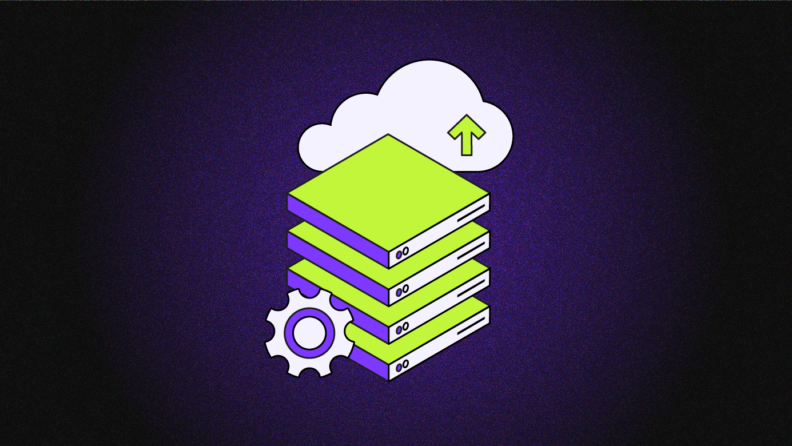Database-as-a-Service (DBaaS) is a cloud-based approach where a service provider manages all the core functionalities of a traditional database on behalf of a client company. That means the provider handles most of the heavy lifting involved in database setup, operations, and maintenance so you don’t have to.
“DBaaS provides users with a hands-off, turn-key database solution,” says Scott Wheeler, Cloud Practice Lead at Asperitas. “The solution manages the database without the user needing to deal with physical hardware, software installation, configuration, or maintenance” such as patching and other updates.
In this article, we’ll break down the key concepts and lingo around DBaaS, as well as the pros and cons of taking this approach to database operations and management. Let’s dig in.
What is DBaaS? Key Concepts, Terminology, and Functions
Today’s organizations operate in the “everything-as-a-service” era: technology leaders are no longer beholden to building and managing their own IT infrastructure, applications, and other services to meet their business and technical requirements. Don’t want to build your own datacenter? You’ve got multiple options for running your IT infrastructure in the cloud, also known as Infrastructure-as-a-Service (IaaS). Ditto for all manner of software applications available as cloud-based applications, better known as Software-as-a-Service (SaaS).
And if you don’t want to deploy and manage your own databases, you don’t have to. You can use a cloud database – or Database-as-a-Service (DBaaS) solution – instead. DBaaS is a cloud-based database service where a provider manages all the core functionalities of a traditional database on behalf of a client company. Virtually every organization needs a database, but not every organization wants to be in the business of database administration.
Managed database service providers handle the operational overhead of database setup, maintenance, backups, scaling, and upgrades, thus allowing their customers to focus exclusively on their data and applications.
Because it’s a cloud service, DBaaS provides elasticity, enabling users to either scale up or scale down their databases according to their specific business needs – similar to how IaaS enables IT teams to scale up (or down) their infrastructure resources to match their actual needs, rather than provisioning a bunch of their own physical servers that may go unused for large periods of time (or, conversely, running out of resources during peak demand periods.)
It allows for organizations to rapidly spin up a database without the need to set up the underlying infrastructure or database technology.
Zagales points out that this fundamentally allows teams to focus on using the database rather than managing it.
As a result, DBaaS offers tremendous potential for companies of all sizes and across virtually any industry. That can be especially for start-ups and smaller businesses with limited staff and resources, though the benefits of DBaaS apply in larger companies as well. By leveraging DBaaS, businesses with limited resources can gain access to powerful database technologies that they might otherwise struggle to implement and maintain efficiently.
In addition to scalability and elasticity, another key DBaaS concept is multi-tenancy, in which multiple users share a single database instance with isolation mechanisms in place to ensure data integrity and privacy.
Key features and functions of DBaaS include data management, database tuning, backup, recovery, and security. The service provider is responsible for ensuring data consistency, database performance optimization, and regular backups for data recovery and protection. Security is also a fundamental responsibility, typically employing advanced security measures such as encryption and access controls. Many DBaaS providers also offer services around database design, migration, and related needs to further simplify database administration for customers.
9 Benefits of Utilizing DBaaS
If you’ve got applications and data, you almost certainly need a database (or multiple databases.) Again, though, that doesn’t mean you have to shoulder the full cost, expertise, and operational effort required of traditional database management.
Indeed, the benefits of a cloud database tend to cluster around cost management, process optimization, resource utilization, and staffing – while also recognizing the importance of data security, privacy, and availability. Let’s take a closer look at some of the key advantages DBaaS offers:
- Reduced costs: DBaaS isn’t free, of course, but can offer cost efficiencies and optimization, especially for organizations with constrained capital resources.
“DBaaS eliminates the need for upfront capital investment in hardware and software or the cost of its maintenance,” Wheeler says. “Organizations pay only for their storage and compute resources, often leading to lower total ownership costs than traditional on-premises database management.”
Zagales adds that this can also take the form of reduced management overhead since teams can “manage” whole fleets of DBs without sucking up valuable time with day-to-day administrative tasks. He also notes that some organizations may be able to reduce their licensing costs, often by moving to a DBaaS solution based on open-source technologies (instead of a commercial database.) - Development Velocity: Dev teams can write, test, deploy, and update code faster because they’re not manually provisioning and configuring databases (or waiting for a DBA to do the same). “DBaaS enables rapid provisioning of database resources, allowing organizations to get their applications up and running faster,” Wheeler says. “This agility is particularly beneficial for projects with tight deadlines or supporting agile development practices.”
- Access to Advanced Technologies and Features: As with other cloud-based services, DBaaS providers commonly offer the latest and greatest in database technologies and features (and at a lower up-front cost) in areas like data analytics, machine learning integrations, automation, and more. Wheeler notes that many companies don’t have the time, expertise, or operating capital to be able to regularly deploy those newer technologies on their own.
- Reduced Training: “Since DBaaS is fully managed, it eliminates the specialized knowledge needed to implement and maintain a database solution, thus reducing labor costs,” Wheeler says.
- Scalability and Elasticity: As with other types of cloud-based infrastructure, DBaaS enables users to scale up to meet peak demand and scale down to reduce costs when usage is low.
- Availability and Reliability: “DBaaS often includes built-in high availability and disaster recovery capabilities,” Wheeler says. “Data is replicated across multiple locations, ensuring continuity of service and data protection in case of hardware failure or other issues.”
- Security and Compliance: “DBaaS providers invest heavily in security measures, including encryption, access controls, and auditing capabilities, to protect data and ensure compliance with various regulations and standards,” Wheeler says.
- Accessibility and Connectivity: Wheeler also notes that a cloud-based database can be accessed from anywhere, which makes it a good fit for remote work and collaboration. Just as importantly, a good DBaaS solution integrates seamlessly with other types of cloud infrastructure, applications, and services, which can reduce integration efforts and enhance data workflows.
- Performance Monitoring and Optimization: Many DBaaS offerings include monitoring and performance optimization tools, helping organizations to ensure their databases are running efficiently and to address any issues that arise quickly,” Wheeler says.
Example Use Cases for DBaaS
Zagales shares a common scenario that illustrates some of the core concepts and benefits of DBaaS: Using a DBaaS for application backends that run on SQL or relational databases like Postgres, MySQL, Oracle, or MS SQL.
These are moved to DBaaS to allow application teams to be in control of their own backend without the involvement of infrastructure or database administration (DBA) teams. Configurations like High Availability (HA), Read Replicas, and Disaster Recovery (DR) failovers all become part of the deployment and are extremely simplified.
There are also multiple DBaaS options for NoSQL databases such as MongoDB, Cassandra, and CouchDB. These databases are non-relational and don't require a set schema for data entry, making them more flexible and capable of handling unstructured data. NoSQL databases are typically preferable for handling large amounts of data and are commonly used for big data and real-time web applications. Google's Cloud Datastore, Amazon's DynamoDB, and Microsoft's Azure Cosmos DB are popular examples of NoSQL DBaaS.
Regardless of database type, Wheeler from Asperitas shares several general use cases where DBaaS’s benefits – elasticity, cost efficiency, scalability, and on-demand availability – come into play.
- Rapid Application Development: “DBaaS is ideal for developers and teams who need to quickly set up and tear down databases during the application development and testing, allowing for agile development practices and faster time-to-market,” Wheeler says. He adds that DBaaS is often a go-to choice for development and testing requirements since it enables software teams to spin up multiple database instances as needed without touching or impacting production databases.
- Scalable Web and Mobile Applications: “DBaaS can dynamically adjust resources to meet fluctuating demands for web and mobile applications that experience variable traffic and require scalability.”
- Startups and Small Businesses: Startups and small businesses that may not have the capital or expertise to invest in on-premise database infrastructure can leverage DBaaS to access advanced database capabilities, paying only for what they use and scaling as they grow.
- Seasonal Businesses: “For businesses with seasonal spikes in demand, such as retail companies during the holiday season, DBaaS allows for temporarily scaling database resources to handle increased traffic and then scaling down during off-peak times to control costs.
- Limited Database Technical Skills: “DBaaS is perfect for users with limited technical database knowledge, as the solution is fully managed.”
The Potential Challenges Implementing DBaaS
When considering a DBaaS versus a traditional database, there are some potential trade-offs to keep in mind. These include:
- Limited features and customization: Daniel Zagales of 66degrees notes that DBaaS solutions typically don’t allow for as much customization as an on-premises database. Similarly, DBaaS solutions sometimes limit available features in cloud-based versions of traditional database technologies like MySQL and Microsoft SQL Server. Here are examples of feature limitations for both Google Cloud and AWS, respectively.
- Security and compliance concerns: Wheeler notes that while DBaaS providers generally offer robust security measures, hosting sensitive data off-premises can raise concerns about data privacy, security, and compliance in regulated industries. “This is especially true when data is stored in multiple jurisdictions globally,” Wheeler says.
- Unexpected costs: While DBaaS can offer cost efficiencies, especially in terms of CAPEX/OPEX, it can also make costs less predictable if not properly managed. “While DBaaS can be cost-effective, unpredictable workloads or poorly managed resources can lead to unexpected costs,” Wheeler says. “Organizations need to monitor their usage carefully to avoid budget overruns.” Zagales adds that compute costs can run higher with DBaaS (compared with an on-premises database) as well.
- Migration and integration issues: Part of the appeal of DBaaS is the speed with which someone can spin up a new database instance. However, organizations that are looking to migrate large databases and data stores to a DBaaS solution may find the initial migration challenging, according to Wheeler, as well as run into integration issues with legacy and/or on-premises systems.
The Future of DBaaS
Like most technologies – and especially cloud computing technologies – DBaaS is not static.
"The landscape of DBaaS is constantly evolving, with several key trends shaping its future," Wheeler says.
Wheeler and Zagales let us peek at their crystal ball to see where DBaaS is heading next. Here are several key trends for CTOs to monitor:
AI and Machine Learning Capabilities Will Grow: “DBaaS providers increasingly integrate AI and machine learning capabilities into their services, enabling businesses to derive insights from their data more efficiently and automate decision-making processes,” Wheeler says.
Providers Will Prioritize Security and Compliance: Just as cloud computing overall had to earn the trust of IT leaders and their teams, DBaaS will need to double down on security, compliance, and privacy controls.
As data privacy and protection regulations become more stringent globally, DBaaS providers enhance their security features, including encryption, access controls, and audit logs, to help organizations comply with regulations like GDPR, CCPA, and others.
Data-as-a-Service (DaaS) Integration: DBaaS is increasingly being integrated with Data-as-a-Service offerings, enabling organizations to access and analyze data from various sources seamlessly, facilitating better data-driven decision-making.
DBaaS Will Be a Key Component of Multi-Cloud and Hybrid Cloud Environments: “There is a growing trend towards multi-cloud and hybrid cloud strategies, where organizations use DBaaS across different cloud providers or in conjunction with on-premises databases,” Wheeler says. “This approach offers flexibility, optimizes costs, and reduces the risk of vendor lock-in.”
Edge Computing Use Cases Will Grow: “With the rise of IoT and edge computing, there's a growing need for DBaaS solutions that can operate effectively at the edge of networks, processing data closer to its source and reducing latency,” Wheeler says.
The Scope of DBaaS Will Expand: Finally, Zagales from 66degrees predicts that DBaaS vendors will expand the menu of features and services they offer under the umbrella of “DBaaS” to bring as many database management requirements as possible into the “as-a-service” realm.
“For example, [they could offer] recommendations on performance improvements, analysis of database estates including engine and version distribution to keep technology sprawl low, and generative AI assistance to help manage and execute database-related tasks,” Zagales said.
The Bottom Line
Virtually every business needs a database—and sometimes a whole fleet of them. But not every organization is ideally suited to handle the operational overhead involved in procuring, setting up, deploying, managing, securing, and updating those databases.
While there are pros and cons to consider, a DBaaS solution can offer the best available database technologies at a manageable cost – while minimizing the workload impact on IT teams that are already stretched thin.
Join The CTO Club’s newsletter for more industry news and discussions!




